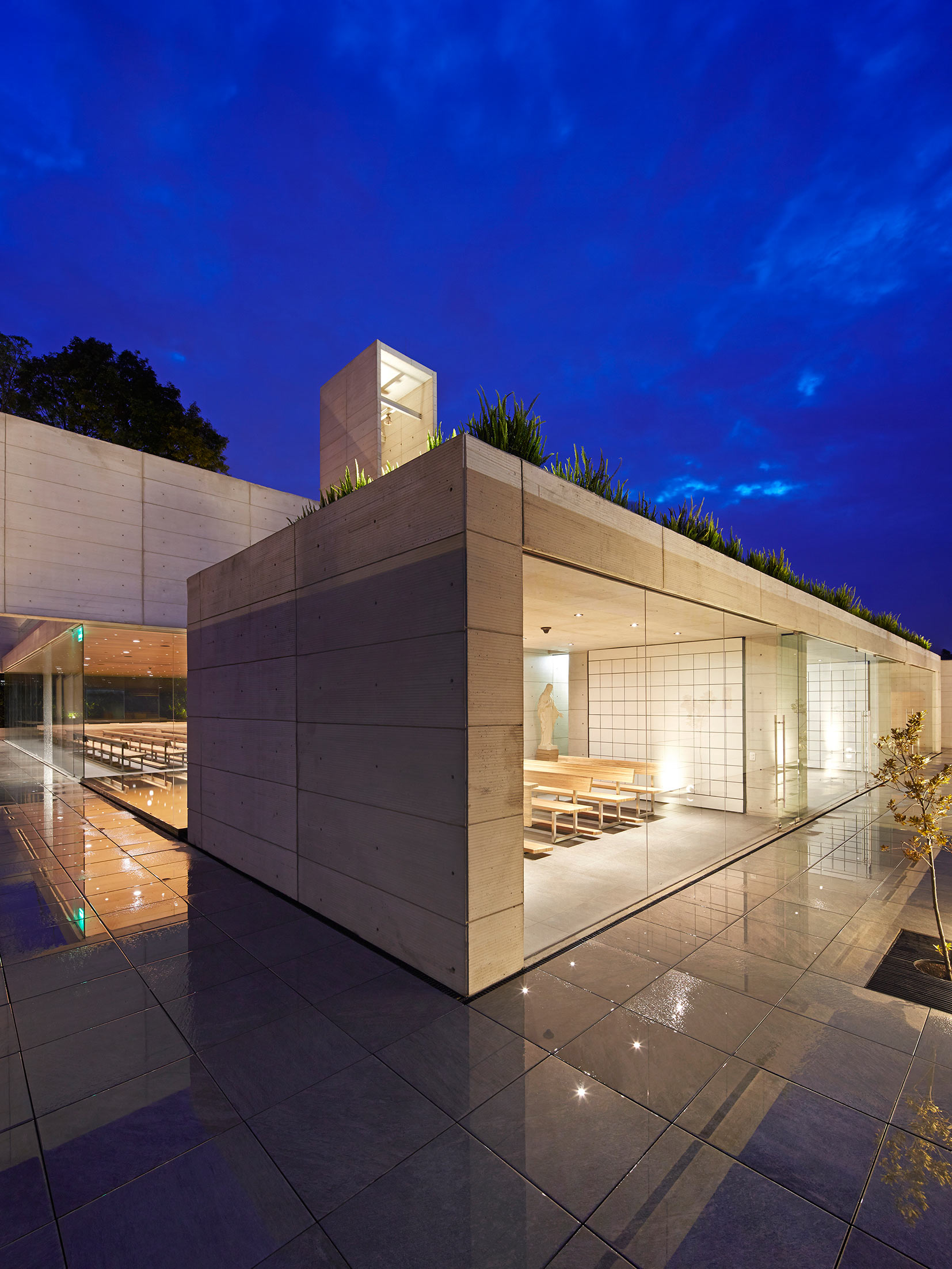Chapel Santa María de los Caballeros in Colombia: A Model for Contemporary Religious Buildings - Chapel Santa María de los Caballeros in Colombia: A Model for Contemporary Religious Buildings
Press Releases
For its contemporary design and sustainable features, the chapel is unique in the country and won first place in the international edition of the XXIV CEMEX Building Award in the Institutional – Industrial category.
With its roof that seems to "levitate" over the main schoolyard of the Gimnasio Campestre school in the Colombian capital of Bogota, the Santa María de los Caballeros chapel is a serene space that shows what engineering and architecture can achieve when paired with the right materials.
The project arose from the idea of producing a sunken space framed by retaining walls and with a deck suspended in the air. For this reason, the choice of a CEMEX value-added concrete as the foundational material to achieve this goal was key to carrying out the idea within the schedule and budget established by the school and in keeping with the vision of the architects at MGP Architecture & Urbanism.
The building’s technical components are very austere; only a few very strong walls in concrete, carefully placed and constructed, delineate the space and image of the chapel. The walls of exposed concrete with a textured finish that reflects natural light, conform to the height of the rest of the buildings at the school, but are still a commanding presence on the main courtyard.
From the project’s conception to execution by architects, construction engineers and the school, CEMEX was on hand to offer the concrete-related technical and economic solutions needed to carry out this project. As a result of this team effort and after different tests for resistance, compaction, plasticity, color and texture, the team chose a Pearl Grey Architectural Hidratium concrete that was textured using formwork made of negative striped Plasti-wood tablets mounted on large-format industrial metal panels.
Hidratium is a CEMEX self-curing ready-mix concrete technology developed by the CEMEX Research Group AG in Switzerland. Its many advantages, including the improved efficiency in construction, made it an excellent choice for this project, which will enjoy increased durability compared to buildings of conventional concrete. “This innovative concrete technology is designed to enable our customers to avoid extra investment of time as well as money to maintain adequate levels of moisture/curing and attain the maximum performance of the concrete,” said Davide Zampini, Head of the CEMEX Research Group.
The serene design belies a complexity of features that make this a sustainable and more environmentally-friendly building. In the design phase, the proposed objective was for a building that could work naturally, without mechanical support systems and with the lowest possible energy consumption. Multiple strategies were considered for thermal insulation, solar protection, natural ventilation, rainwater harvesting for the water “mirror”, energy-saving devices and high efficiency lighting systems.
For all these design and sustainability elements, the chapel is unique for its kind in the country. Its architectural design led Monsignor Jose Roberto Ospina, Bishop of Buga, to present it to the Archdiocese of Bogota as a model of a contemporary religious building.
According to the architects, today the chapel produces a high sense of pride and ownership in the community for which it was built. "It is from that sense of pride and belonging for our buildings, our institutions and our cities, that we as architects can help to have a society with more solidarity and sense of community," concludes Architect Felipe González Pacheco Mejia, General Director of MGP Architecture & Urbanism.
CEMEX is a global building materials company that provides high quality products and reliable service to customers and communities in more than 50 countries. Celebrating its 110th anniversary, CEMEX has a rich history of improving the well-being of those it serves through innovative building solutions, efficiency advancements, and efforts to promote a sustainable future.
The ventilation in the main temple occurs naturally by using the bell tower as a thermo-syphon, which draws air from the space through the difference in temperature.
The air circulation created in the space separating the temple’s glass walls from the retaining walls prevents condensation.

